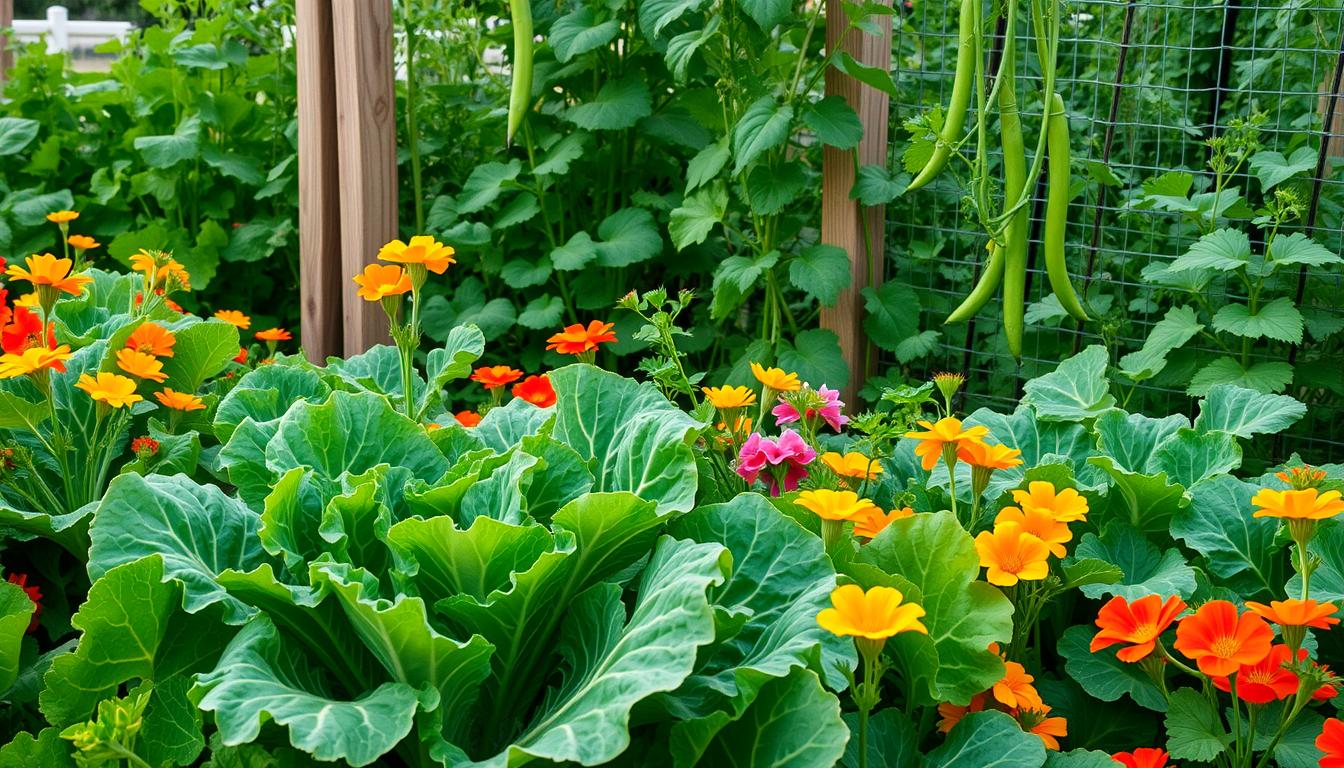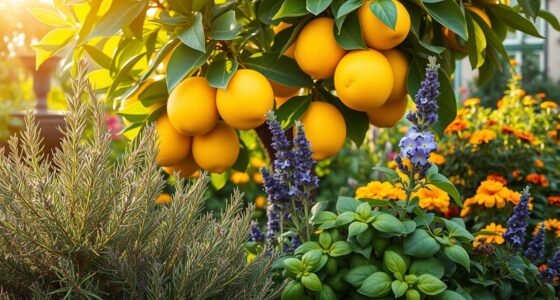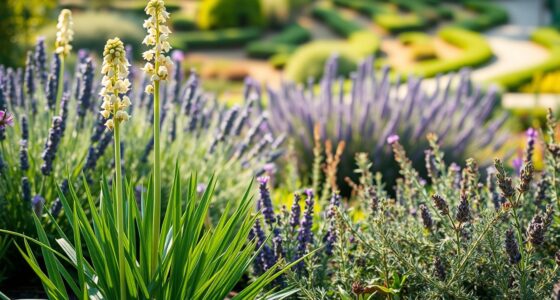Imagine standing in your garden, surrounded by lush greens, the scent of fresh earth mingling with the crispness of vegetables. As you reach for a vibrant leaf of kale, you feel a sense of accomplishment. You didn’t just plant this nutritious powerhouse; you invited a whole ecosystem into your garden. By choosing the right kale companion plants, you can transform your kale patch into a thriving oasis. These companions not only enhance the flavor and yield of your kale but also create a protective barrier against pests. Learning how these plants work together is a vital step to ensuring your best plants to grow with kale flourish in harmony.
Key Takeaways
- Companion planting enhances the growth and flavor of kale.
- Selecting the right companions can deter common pests.
- Understanding plant relationships improves your garden’s ecosystem.
- Healthy kale plants thrive alongside specific herbs, vegetables, and flowers.
- Planning and monitoring your garden layout maximizes your yield.
- Success in companion planting can lead to a bountiful and healthy harvest.
Why Companion Planting Matters for Kale
Understanding the importance of companion planting for kale leads to healthier plants and increased yields. This gardening technique offers various advantages that greatly benefit your kale garden companions.
Benefits of Companion Planting
Companion planting enhances nutrient uptake and overall soil quality. It creates a garden ecosystem where different plants support one another. By promoting biodiversity, you can foster a more resilient environment. Diverse plant interactions often lead to improved growth and health, minimizing the need for synthetic inputs.
How It Boosts Growth
Strategically pairing kale with compatible plants can lead to significant growth enhancements. Certain plants provide shade, while others help retain moisture in the soil. These relationships not only increase productivity but also help create a thriving garden atmosphere. The overall health of your kale is likely to improve through these partnerships.
Pest Management Through Companions
Utilizing companion plants for pest management offers a natural approach to maintaining your garden’s health. Some plants repel unwanted pests, while others attract beneficial insects that prey on harmful ones. By introducing these kale garden companions, you build a balanced ecosystem capable of controlling pest populations effectively.
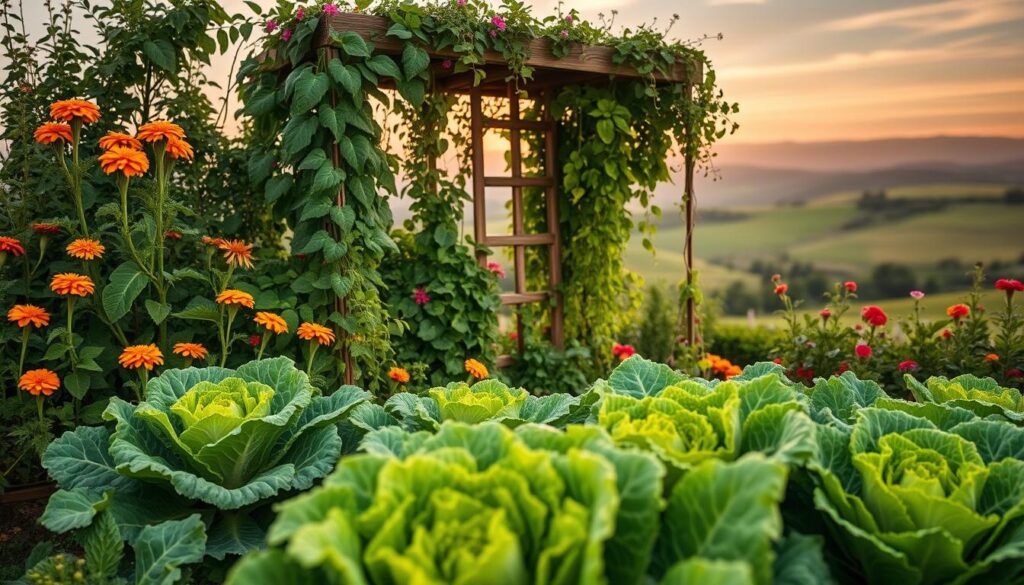
Ideal Companion Plants for Kale
Choosing the right plant companions for your kale can enhance growth and help ensure a robust vegetable garden. You can maximize your gardening success by interplanting with kale and selecting vegetables, herbs, and flowers that benefit each other.
Herbs That Enhance Kale Growth
Herbs are an ideal choice when interplanting with kale. They not only enhance the flavor of your kale but also improve its overall health by attracting beneficial insects that fight off pests. Some effective herbs to consider include:
- Dill: Attracts predators of harmful insects.
- Basil: Enhances flavor and repels certain pests.
- Parsley: A nutrient booster and pest deterrent.
Vegetables to Pair with Kale
Incorporating the right vegetables into your gardening plan can significantly improve soil health and nutrient availability. Consider these vegetable garden companions for kale:
| Vegetable | Benefits |
|---|---|
| Carrots | Loosen the soil and improve drainage. |
| Peas | Add nitrogen to the soil. |
| Radishes | Break up compact soil quickly. |
Flowers That Attract Beneficial Insects
Flowers play a crucial role in attracting pollinators and beneficial insects to your garden. Including these flowers can create a balanced ecosystem around your kale:
- Marigolds: Deter harmful insects and attract pollinators.
- Nasturtiums: Edible flowers that provide a food source for beneficial insects.
- Sunflowers: Attractive blooms that also attract bees.
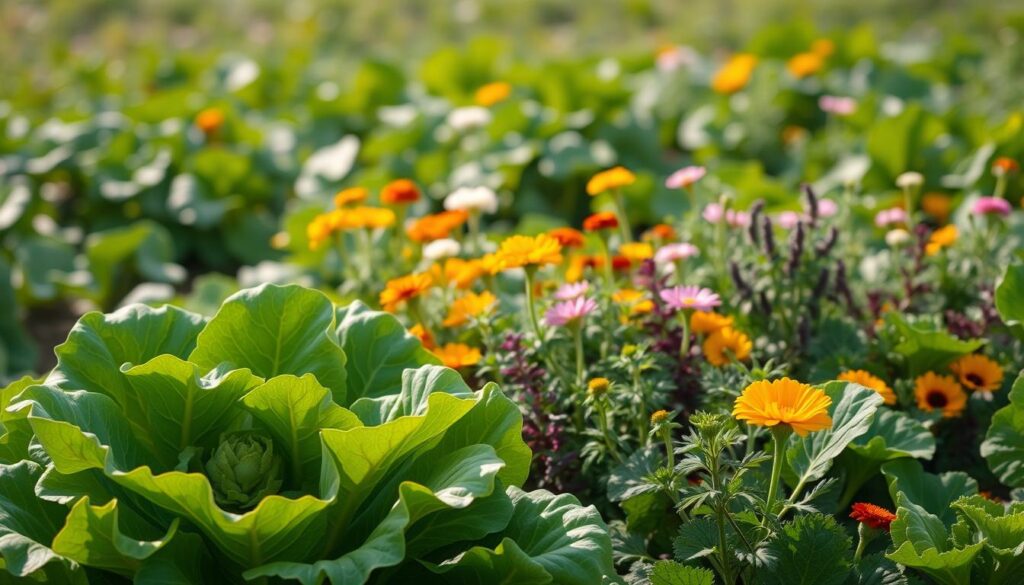
Herbs That Make Great Companions for Kale
In your journey through the kale companion planting guide, incorporating herbs into the garden can enhance both growth and flavor. These herbs not only provide culinary benefits but also contribute to a biodiverse ecosystem that supports kale’s health. Here’s a closer look at three standout herbs that can thrive alongside your kale.
Basil: A Flavorful Companion
Basil brings more than just flavor; it emits a strong aroma that deters pests. When planted near kale, basil can enhance your dishes with a delightful flavor profile while keeping unwanted insects at bay. You may find that having basil by your side creates a more vibrant and healthy growing environment for your kale.
Dill: Enhancer of Kale’s Flavor
Dill not only adds a unique taste to meals but also attracts beneficial insects, such as ladybugs and lacewings. These insects help manage aphid populations that can otherwise threaten your kale. By planting dill, you foster a supportive environment for your kale while enjoying the aromatic benefits this herb provides.
Oregano: Natural Pest Repellent
Oregano is renowned for its culinary uses, but its pest-repelling qualities deserve recognition as well. This hardy herb emits essential oils that deter harmful insects often found near kale. Pairing oregano with your kale can strengthen its defenses, creating a more resilient garden.
| Herb | Flavor Contribution | Pest Management Benefits |
|---|---|---|
| Basil | Enhances taste in dishes | Repels pest insects |
| Dill | Adds unique flavor | Attracts beneficial predatory insects |
| Oregano | Rich, aromatic flavor | Serves as a natural pest repellent |
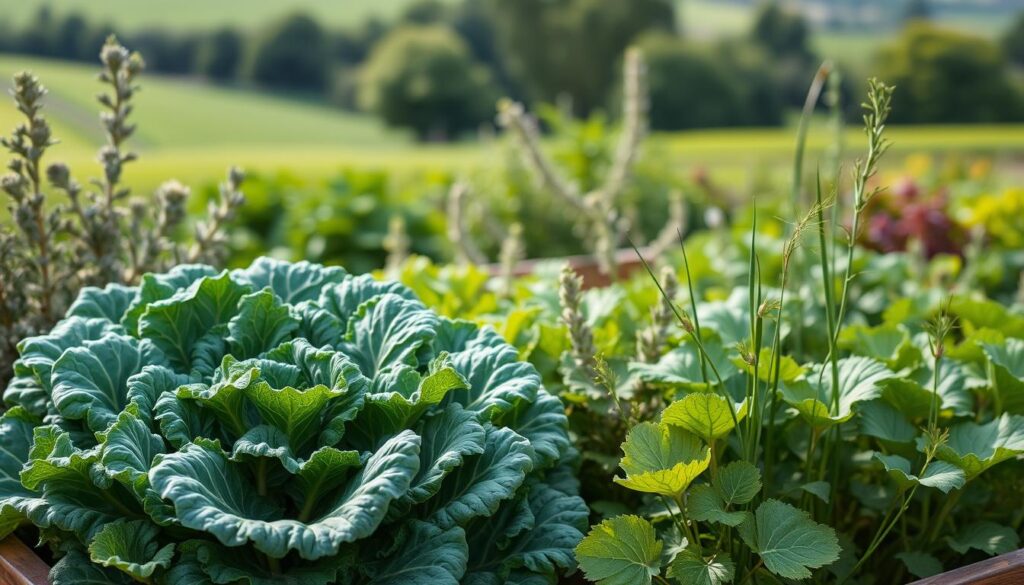
Vegetables to Consider Planting with Kale
Choosing the right companions for your kale can significantly enhance its growth and overall health. Among the best plants to grow with kale, carrots, peas, and radishes stand out due to their complementary growing habits and benefits. These vegetables not only share beneficial growing traits but also help maximize your gardening space.
Carrots: Best Friends in the Garden
Carrots make excellent companions as they grow beneath the soil and do not compete for light or nutrients with kale. When planted together, they utilize the garden space effectively, allowing you to cultivate a diverse range of crops.
Peas: A Perfect Partner
Peas are nitrogen-fixing plants, enriching the soil with essential nutrients. This partnership allows kale to thrive, benefiting from the increased fertility that peas provide. Growing them together can elevate the health and yield of your kale plants, making peas among the best plants to grow with kale.
Radishes: Quick Growth Allies
Radishes mature at a rapid pace, allowing for early harvesting before they begin to compete with kale for resources. This quick growth helps you make the most of your space by enabling multiple harvests in one season, enhancing the productivity of your garden.
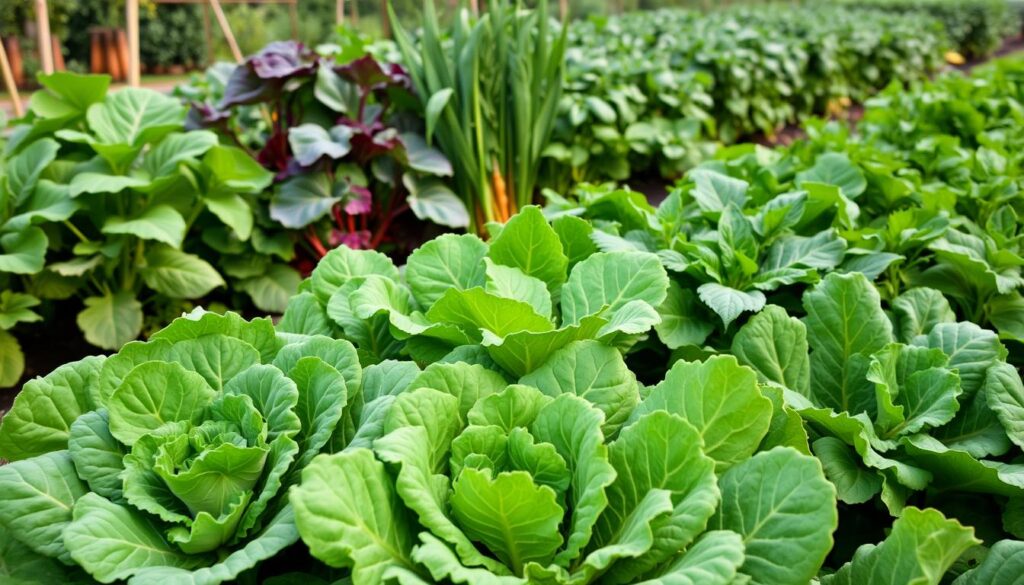
| Vegetable | Benefits | Growth Habit | Soil Nutrient Impact |
|---|---|---|---|
| Carrots | Space-efficient, no competition for light | Root vegetable | Minimal soil impact |
| Peas | Nitrogen-fixing, enhances soil fertility | Climbing vine | Increases nitrogen levels |
| Radishes | Rapid growth, harvest before competition starts | Root vegetable | Minimal soil impact initially |
Flowers to Attract Pollinators for Kale
Incorporating flowers that attract beneficial insects can significantly improve your kale garden’s ecosystem. These blooms do more than beautify; they play essential roles in pest management and attracting pollinators such as bees and butterflies. Two remarkable options include marigolds and nasturtiums.
Marigolds: Pest-Repelling Blooms
Marigolds are well-regarded for their ability to repel pests that threaten your kale. Their strong scent deters common garden nuisances like aphids, nematodes, and spider mites. By planting marigolds alongside your kale, you’ll create a natural barrier against these threats while simultaneously inviting pollinators to your garden.
Nasturtiums: Edible Flowers that Deter Pests
Nasturtiums are not only stunning but serve as excellent trap crops. The plants attract aphids and other pests away from your kale, diverting them with their appealing flowers and foliage. As an added bonus, nasturtiums are entirely edible, allowing you to enjoy their peppery flavor in salads or as garnishes. By cultivating these flowers, you enhance the health of your kale while supporting a diverse ecosystem of beneficial insects.
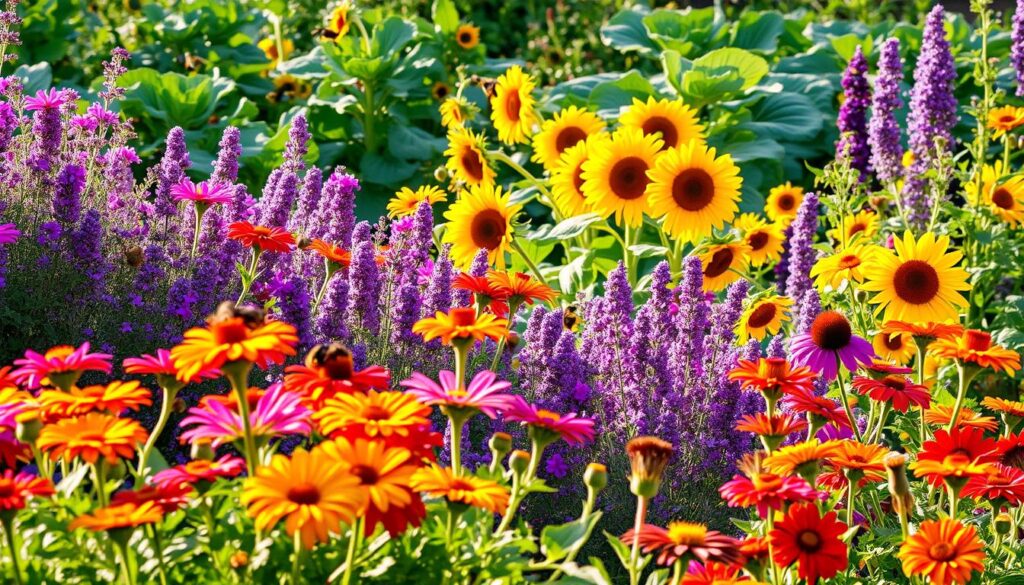
Vegetables to Avoid Planting with Kale
Choosing the right companions is vital for a flourishing garden, especially when it comes to kale. Knowing what to plant with kale involves understanding the plants that may hinder its growth. Some vegetables can compete for nutrients and attract pests that can harm your kale. To maintain a healthy growing environment, you should be aware of these adversary plants.
Common Kale Enemies in the Garden
Several vegetables may not mix well with kale due to their growth patterns or pest attractions. Here are some to avoid:
- Broccoli: Similar nutrient needs can lead to competition, making it a poor companion.
- Cauliflower: Shares the same pests as kale, which can lead to increased infestations.
- Brussels Sprouts: These can overshadow kale and inhibit its growth.
- Savory Herbs: While some herbs support kale, others can overpower and cause mismanagement of nutrients.
How to Identify Competing Plants
Watch for signs that certain plants are competing with your kale. Here are a few tips:
- Observe the growth rate of kale compared to nearby plants; if kale appears stunted, consider potential competition.
- Monitor pest activity during the growing season. An influx of pests likely points to nearby plants attracting them.
- Evaluate sunlight exposure; taller plants nearby can block kale from getting the necessary light it needs.
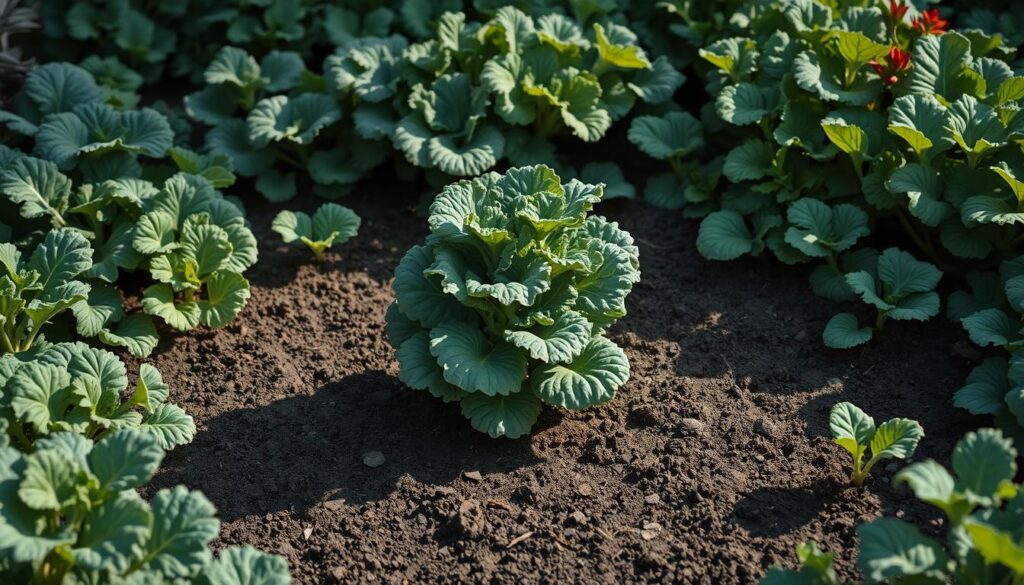
Best Practices for Companion Planting
Executing effective practices in companion planting for kale can significantly enhance your gardening experience. A well-thought-out garden layout forms the foundation of successful growth. Additionally, implementing crop rotation each year plays a crucial role in sustaining soil health and managing pests. Keeping your soil healthy through organic matter and proper watering techniques will support the flourishing of both kale and its companion plants.
Planning Your Garden Layout
Begin by considering the heights and spacing of your plants. Taller plants can create shade for their shorter companions, while proper spacing allows air circulation, preventing mildew and disease.
Rotating Your Crops Yearly
Yearly crop rotation promotes soil health by preventing nutrient depletion. This approach disrupts the life cycles of pests and diseases that may be lurking in the soil, ultimately benefiting your kale.
Maintaining Healthy Soil
Healthy soil is key for vibrant growth. Incorporate organic matter such as compost and practice consistent watering to create an inviting environment for your kale and companion plants. This attention to soil health is vital for microbe activity, which supports plant nutrition.
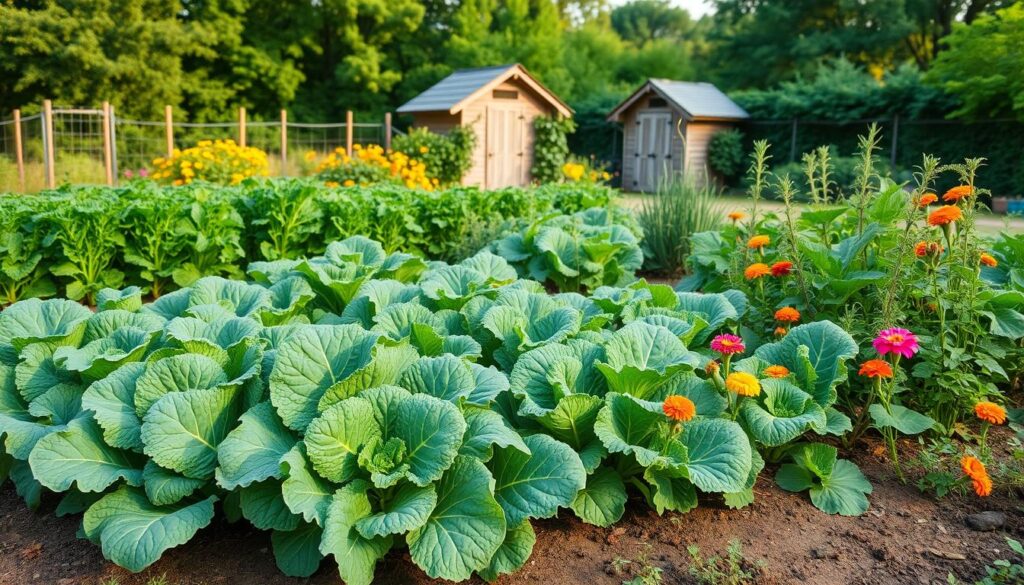
Seasonal Considerations for Planting
Understanding the seasons plays a crucial role in successful planting kale companions. Each season brings its unique climate and growing conditions, which can significantly influence the growth of your kale plants and their affiliated companions.
Monitoring Weather Patterns
Paying attention to local weather patterns enhances your planting strategy. Consistent temperature and moisture levels create an ideal environment for growth. Kale typically thrives in cooler temperatures, so monitoring early spring forecasts can help you determine the right time to start planting. Keeping track of nighttime lows is equally important, as kale can suffer if exposed to unexpected frosts.
Best Times to Plant Kale Companions
The timing for planting kale companions can vary widely depending on the specific plants. Early spring is often prime for cool-weather companions like peas and carrots, which complement kale beautifully. Conversely, late fall offers a second chance for planting these companions, allowing for extended harvest periods. Mapping out your planting schedule based on seasonal conditions will lead to a more fruitful garden.

| Companion Plant | Best Planting Season | Growth Characteristics |
|---|---|---|
| Peas | Early Spring | Supports kale while also fixing nitrogen in the soil. |
| Carrots | Early Spring | Grow well alongside kale without competing for nutrients. |
| Radishes | Late Summer / Early Fall | Quick-growing, they can be harvested before kale matures. |
Caring for Your Kale and Companion Plants
Caring for kale and its companion plants involves attention to both watering and fertilization. This ensures that your kale thrives while benefitting from the symbiotic relationships formed with its companions. Proper care not only enhances the growth of your kale plants but also promotes overall garden health.
Watering Requirements for Kale
Kale requires consistent moisture, thriving best in well-draining, loamy soil. Regularly check the soil moisture levels to avoid overwatering, which can lead to root rot. Deep watering once or twice a week is typically sufficient, key to making sure your kale companion plants also remain healthy.
Fertilizing Techniques for Companion Plants
Using organic fertilizers rich in nitrogen is beneficial for both kale and its companions. Legumes, such as peas and beans, can fix nitrogen in the soil, enriching it for the kale plants. When selecting fertilizers, consider slow-release options as they provide nutrients over time, promoting sustained growth in your garden.
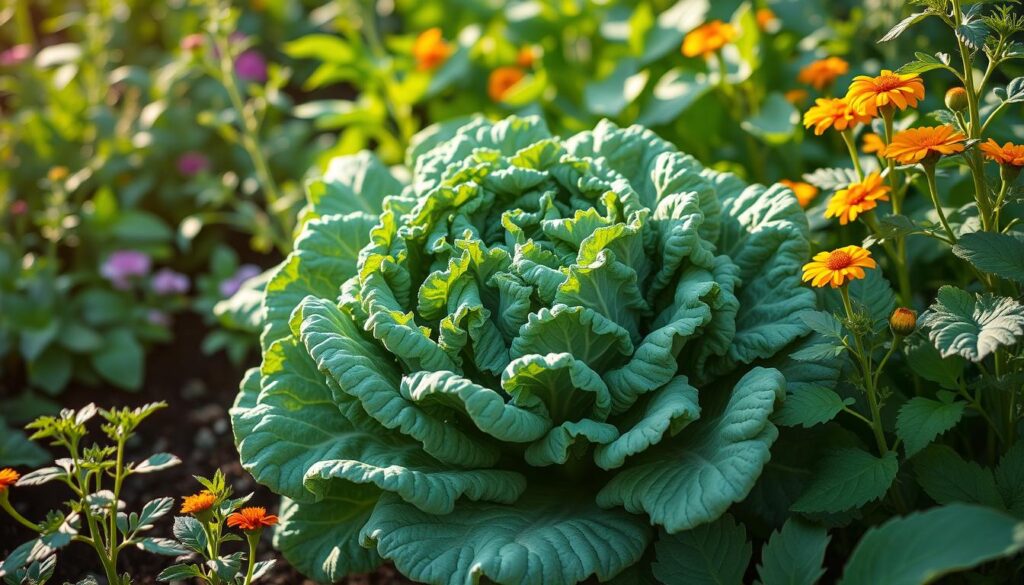
Signs of Healthy Companion Plant Relationships
When growing vegetable garden companions for kale, your keen observation will play a crucial role in gauging the health of your plants. Regularly inspecting your garden allows you to spot signs indicating successful relationships between kale and its companions. Key indicators include balanced growth patterns and vibrant leaves. Conversely, identifying any initial signs of common issues can help you take timely action to ensure a thriving environment.
Growth Indicators to Look For
Healthy vegetable garden companions for kale demonstrate several growth indicators that signal a successful partnership. Look for the following:
- Strong Growth Rates: Both kale and its companions flourish without competing for resources.
- Minimal Pest Pressure: A well-functioning plant community will mitigate common pest problems, showcasing healthy foliage.
- Diversity of Plants: An abundance of various companion plants indicates effective companion planting strategies.
Common Problems and Solutions
Even the best-planned vegetable garden companions for kale can encounter hurdles along the way. Recognizing these problems early is vital. Address issues such as:
- Pests: Implement organic pest management techniques like introducing beneficial insects.
- Nutrient Deficiencies: Regularly test soil health and consider optimized organic fertilizers.
- Overcrowding: Maintain proper spacing between plants to foster good air circulation and growth.
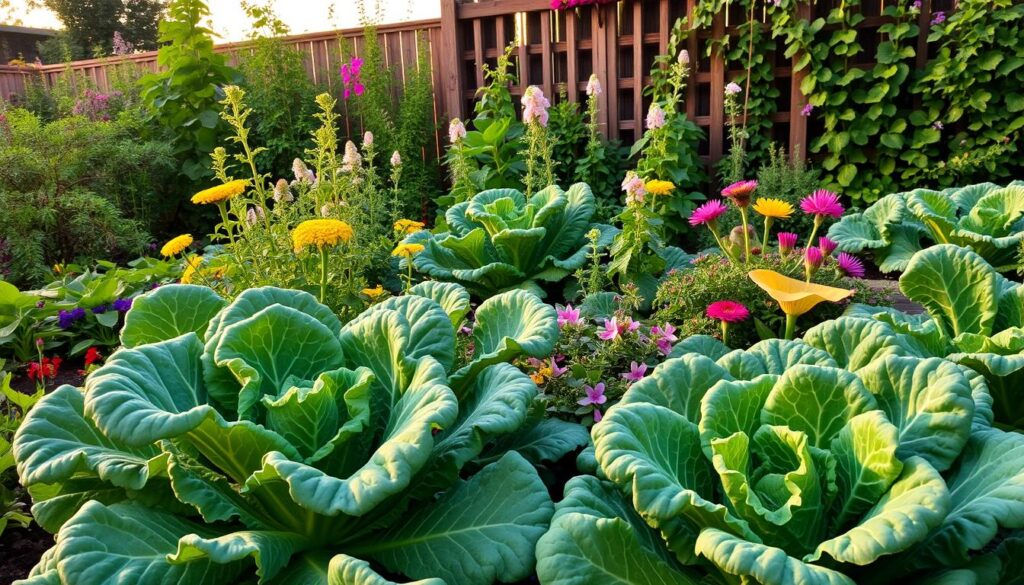
Harvesting Kale and Companion Plants Together
Successfully harvesting kale requires thoughtful coordination, especially when considering your companion plants. Understanding the best practices for harvesting kale ensures you maximize yields while maintaining the health of all plants involved. Timing plays a vital role in this process, as you can harvest kale continuously while waiting for companions to reach maturity.
Timing Your Harvests
For optimal freshness, you should plan to harvest your kale early in the morning or late in the evening. This is when the leaves are crisp and full of moisture. Rotate your harvests by picking the outer leaves first, allowing the inner ones to mature. This method fits perfectly into the best practices for harvesting kale.
Storing Kale and Its Companions
Post-harvest storage affects the quality of your greens. Keep kale and its companions in the refrigerator to maintain their freshness. You may also consider blanching and freezing them for longer storage. By employing the best practices for harvesting kale, you ensure both flavor and nutritional value are preserved, making your gardening efforts rewarding.
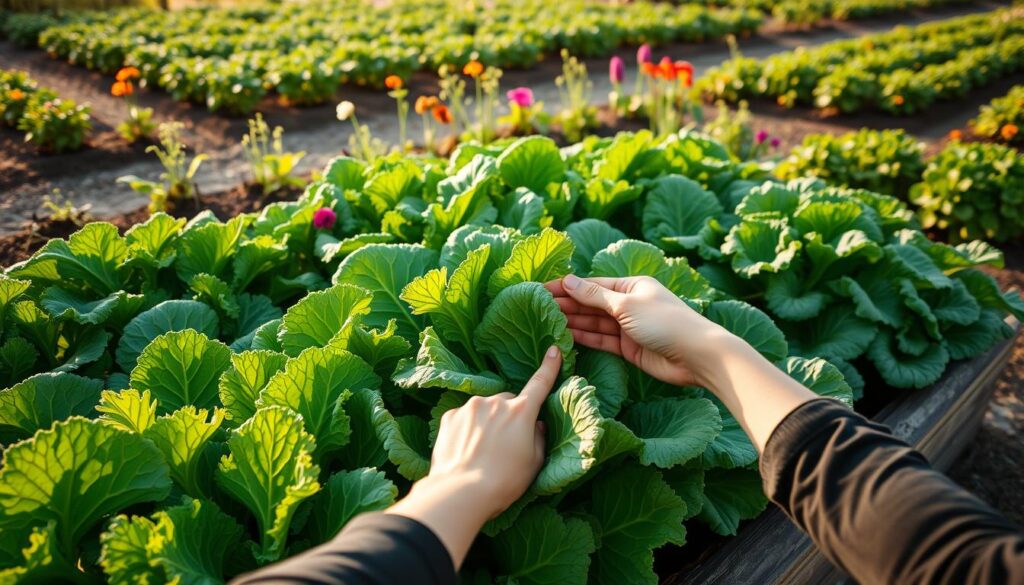
Using Kale Plants for Pollinator Support
Kale plants offer significant benefits beyond their nutritious leaves. With proper management, these greens can support various pollinators, contributing to a healthy garden ecosystem. Integrating kale garden companions invites not just beauty but also essential pollinating insects into your outdoor space.
Encouraging Pollinators
One simple strategy to boost pollinator presence is to allow your kale plants to flower after harvest. The flowers attract bees and butterflies, providing them with much-needed nectar and pollen. Creating an inviting environment with a mix of kale garden companions will encourage these beneficial insects to return yearly, enhancing your garden’s productivity.
Habitat Creation with Kale
Including a variety of companion plants alongside your kale can further promote a thriving pollinator habitat. Consider planting flowers, herbs, and vegetables that complement kale’s growth and allure. These companions not only offer food sources for pollinators but also help create a balanced ecosystem, ensuring your kale and other plants flourish.

| Companion Plant | Benefit to Kale | Pollinator Attraction |
|---|---|---|
| Marigold | Pest repellent | Bee and butterfly attraction |
| Nasturtium | Pest deterrent | Encourages pollinators |
| Basil | Flavor enhancement | Attracts bees |
Share Your Companion Planting Success
Sharing gardening experiences not only helps you grow as a gardener but also strengthens the gardening community. Documenting your successes and challenges creates a valuable resource for others, making it easier for them to learn what works and what doesn’t. By engaging actively with fellow gardeners, you can enrich your own journey and inspire new practitioners.
Documenting Your Experiences
Start by keeping a gardening journal to record the plants you’ve grown, the techniques you’ve tried, and the results achieved. Include details about your companion planting strategies and any changes you observe in your kale’s growth or health. This practice can lead to better understanding and refinement of your methods. You might find that sharing gardening experiences through blog posts or social media adds a rewarding dimension to your journey.
Communities to Join and Exchange Tips
Numerous communities focused on gardening exist where you can connect with others who share your passion. Joining local gardening clubs or online forums allows you to exchange tips, ask questions, and receive support. These interactions can help you refine your approach to companion planting, fostering a collective environment of learning and improvement.
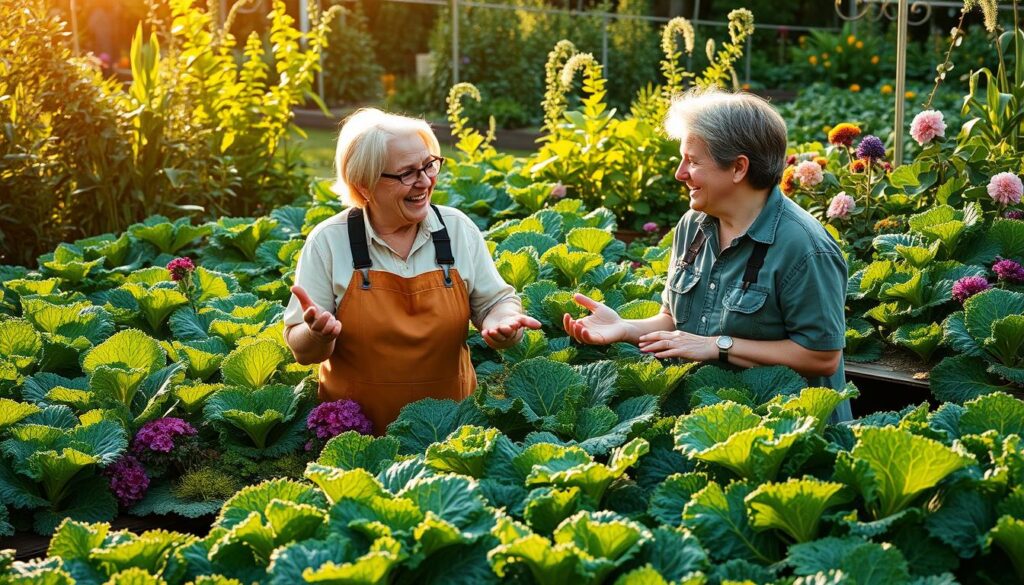
| Community Type | Examples | Benefits |
|---|---|---|
| Online Forums | Reddit Gardening, GardenWeb | Access to diverse experiences and advice |
| Local Clubs | Community Garden Groups, Horticultural Societies | In-person networking and skill sharing |
| Social Media Groups | Facebook Gardening Groups, Instagram Hashtags | Visual inspiration and instant feedback |
Resources for Further Learning About Companion Planting
Expanding your knowledge of companion planting can significantly enhance your gardening experience. There are numerous resources available to help you understand the complexities of this method, ensuring a successful kale and companion plant harvest.
Books and Guides on Companion Planting
Many books on organic gardening include comprehensive sections on companion planting. These resources offer insights into which plants work well together, tips on maximizing space, and details on pest management strategies. Titles like “Carrots Love Tomatoes” and “The Vegetable Gardener’s Bible” provide valuable information that can help you create a thriving garden.
Online Communities and Forums
Engaging with online communities and forums allows you to connect with fellow gardening enthusiasts. Platforms such as gardening subreddits, Facebook groups, and specialized gardening forums enable you to share experiences, ask questions, and receive advice tailored to your specific challenges. Participating in these discussions can make a real difference in your companion planting journey.
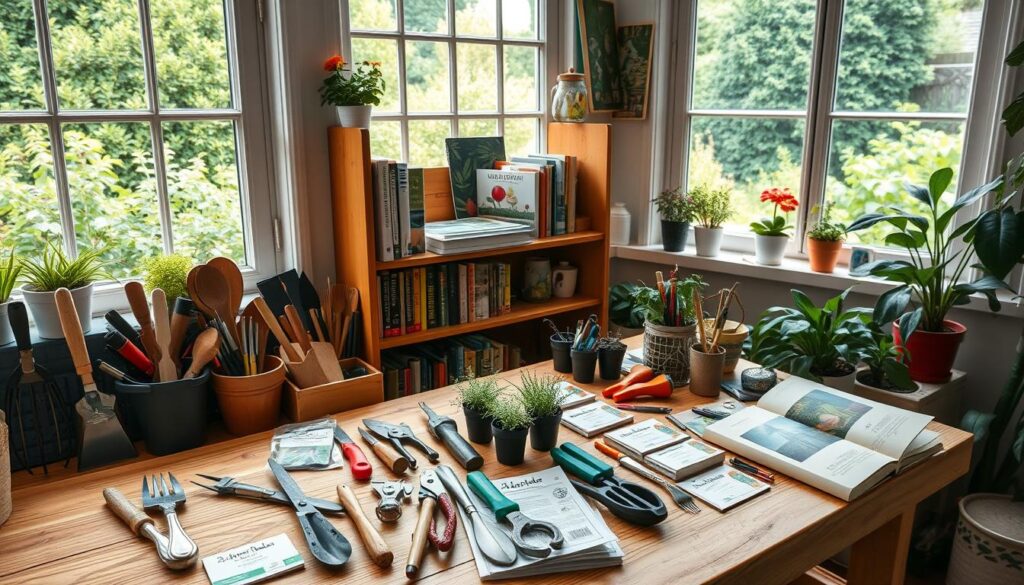
Conclusion: Your Best Kale Garden Awaits
Growing your kale garden can be a rewarding experience, especially when you select the right kale companion plants. With thoughtful planning and attention, harvesting your vibrant kale can be truly satisfying. As you enjoy your fresh kale in your favorite dishes, consider sharing your bounty with friends and family, creating a sense of community around your gardening success.
Celebrate the Harvest
As the season draws to a close, take a moment to appreciate the effort you put into nurturing your kale and companion plants. Incorporate them into delicious recipes or share fresh produce with loved ones. Making the most of your harvest not only enhances your meals but also promotes the joys of gardening and sustainable practices.
Plan for Future Seasons
As you reflect on this year’s gardening experience, think about what worked well and what could be improved for future kale plantings. Experiment with different kale companion plants, keeping notes on their interactions and results. Each season is an opportunity to learn and grow, ensuring that your next kale garden will be even more fruitful.
